Birds
Media
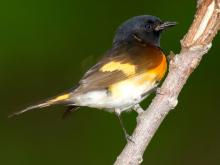
Species Types
Scientific Name
Setophaga ruticilla
Description
American redstarts flit among tree branches, drooping their wings, fanning their tails, and leaping into the air to catch insects. Males are black and orange; females are olive-gray and white.
Media

Species Types
Scientific Name
Setophaga castanea (formerly Dendroica castanea)
Description
The male bay-breasted warbler is easy to identify, while females and nonbreeding males present a challenge. This species migrates through Missouri in spring and fall.
Media
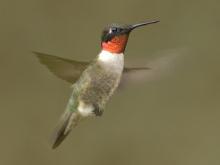
Species Types
Scientific Name
Archilochus colubris
Description
The ruby-throated hummingbird, a tiny bird with a long needlelike bill, is well-known and beloved. It hovers and flies forward and backward with a humming sound. In the light, the male's ruby-red throat shines like a jewel.
Media
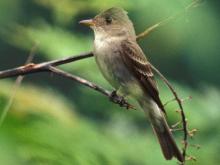
Species Types
Scientific Name
Contopus virens
Description
Its distinctive, slurred “pee-a-wee” song helps differentiate the eastern wood-pewee from our other flycatchers, and from most other small, olive-brown birds.
Species Types
Scientific Name
Vireo flavifrons
Description
While most vireos are drab, the yellow-throated vireo boasts a bright yellow breast, throat, and spectacles. Look for it in places with mature trees.
Media
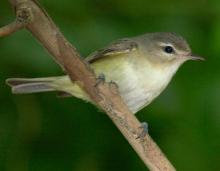
Species Types
Scientific Name
Vireo gilvus
Description
The warbling vireo is a drab little bird with a colorful, brilliant song. It’s a common summer resident. Listen for it in forests, woodlands, and suburbs, especially in large trees near water.
Media

Species Types
Scientific Name
Piranga rubra
Description
Adult male summer tanagers are entirely red — an unforgettable sight as they forage for insects among bright green tree leaves in early summer.
Media

Species Types
Scientific Name
Corthylio calendula
Description
Kinglets are very small, active, insect-eating birds that Missourians see in winter and during migration in spring and fall. Ruby-crowned kinglets are grayish olive, have white wing bars, and flick their wings as they flit around. Males have a small red crown that they occasionally raise.
Media
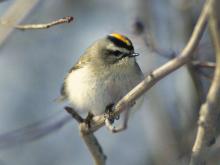
Species Types
Scientific Name
Regulus satrapa
Description
Kinglets are very small, active, insect-eating birds that nervously flit around. Golden-crowned kinglets are grayish olive, with black and white striping on the sides of the head. The black cap has a yellow center. Males have a bright orange center to the yellow crown stripe.
See Also







Media

Species Types
Scientific Name
Hemaris diffinis
Description
The snowberry clearwing is a moth that confuses people because it looks like a bumblebee and flies like a hummingbird!
Media

Species Types
Scientific Name
Hyles lineata
Description
The white-lined sphinx moth sometimes confuses people because it flies, hovers, and eats from flowers like a hummingbird. The adults often fly during daylight hours as well as in the night and are often found at lights.
Media

Species Types
Scientific Name
Darapsa myron
Description
The Virginia creeper sphinx moth is common in woods and brushy areas and comes to lights at night. The larvae eat Virginia creeper and grape leaves.
Media

Species Types
Scientific Name
Perimyotis subflavus (formerly Pipistrellus subflavus)
Description
Tri-colored bats, formerly called eastern pipistrelles, are relatively small and look pale yellowish or pale reddish brown. The main hairs are dark gray at the base, broadly banded with yellowish brown, and tipped with dark brown.
Media

Species Types
Scientific Name
Myotis grisescens
Description
Gray myotises are difficult to distinguish from other mouse-eared bats. A key identifying feature of the gray myotis is that its wing is attached to the ankle and not at the base of the toes. It’s an endangered species.
Media

Species Types
Scientific Name
Myotis lucifugus
Description
The little brown myotis (little brown bat) is one of our most common bats, but populations are declining. White-nose syndrome has taken a heavy toll in northeastern states. This species is now listed as vulnerable across its range.
Media

Species Types
Scientific Name
Myotis sodalis
Description
The Indiana myotis, or Indiana bat, summers along streams and rivers in north Missouri, raising its young under the bark of certain trees. It is an endangered species.
About Birds in Missouri
About 350 species of birds are likely to be seen in Missouri, though nearly 400 have been recorded within our borders. Most people know a bird when they see one — it has feathers, wings, and a bill. Birds are warm-blooded, and most species can fly. Many migrate hundreds or thousands of miles. Birds lay hard-shelled eggs (often in a nest), and the parents care for the young. Many communicate with songs and calls.





















